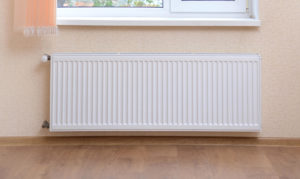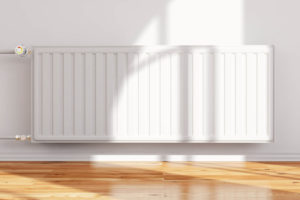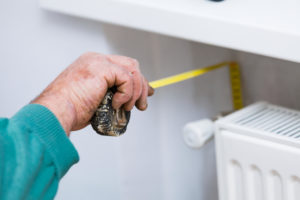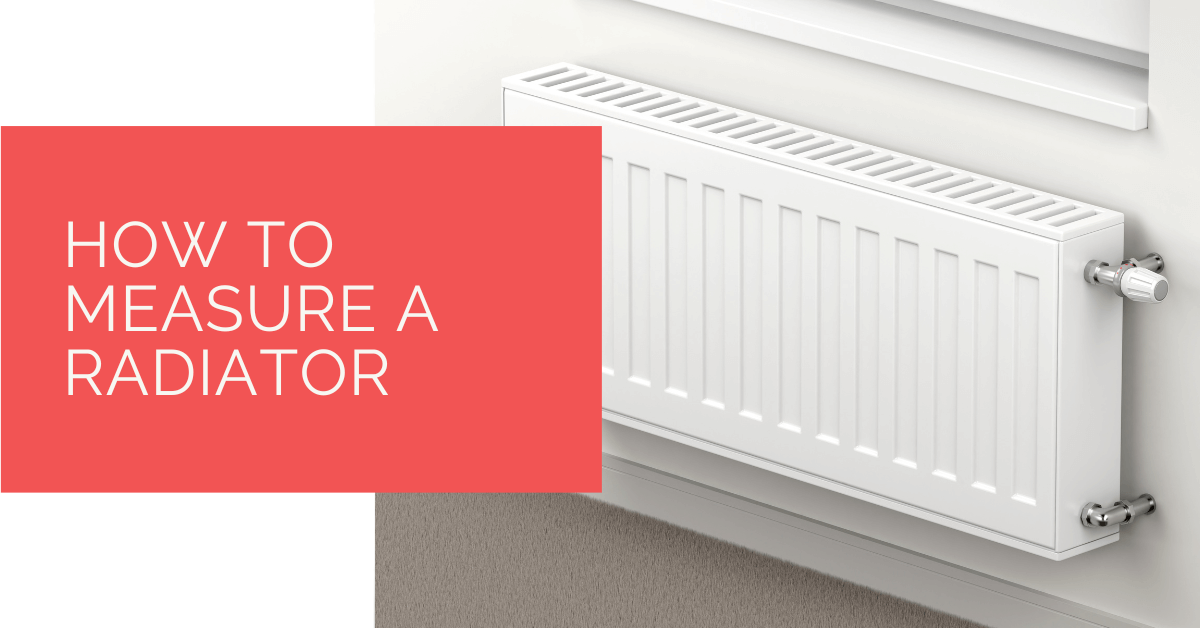Radiators produce and circulate heat across a whole structure. It accomplishes this by creating heat in one location and dispersing it throughout the structure via steam or water. In colder areas, radiators are used to heat buildings.
When upgrading your radiator, it’s crucial to measure it to ensure you purchase the correct size. But before you shell out any money, consider why a radiator needs to be changed and other factors.
This article will cover all the important points to help you measure your radiator and make a beneficial purchase.
Contents
Key Takeaways
- Radiators are essential components of central heating systems, using steam or water to distribute heat throughout structures in colder areas.
- British thermal units (BTU) are used to measure heat output, and radiator covers are used to conceal radiators for aesthetic purposes.
- Reasons for replacing a radiator include age, inefficiency, clogs, and improving aesthetics or energy efficiency. To ensure a proper replacement, measure the wall-to-pipe centres, radiator pipe centres, width, height, projection, and wall-to-face distance.
How Does A Radiator Work?
Understanding how radiators function begins with knowing that they are a component of the central heating system. The boiler, whether fueled by gas or electricity, warms up the water, which then goes through the pipes and into the radiators, where it heats up.
It’s critical to remember that water doesn’t always stay within the radiators but rather flows in and out via radiator valves. When one wishes to heat their home, the water stays within the radiator.
Just like any other household appliance, radiators need to be replaced and while time is usually the major factor, sometimes there can be additional reasons.

What Is BTU?
British thermal units (Btu) are a unit used to measure the amount of heat in fuels or other energy sources. The amount of heat needed to raise a pound of liquid water’s temperature by one degree Fahrenheit at the point where water has its highest density
What Is A Radiator Cover?
A radiator cover is a fixed framework, frequently made of wood, that is placed around a radiator or heater to keep it out of sight.
Why Would A Radiator Need To Be Replaced?
When your heater is old and inefficient, or you simply want a better radiator that matches your home’s design, you might buy a new one. The effectiveness of the installation, the radiator itself, and how well it has been maintained—including its age—determine if it has to be replaced.
Replacing your radiator may be necessary if you notice a lack of heat or uneven distribution. Because radiators can stay sturdy for many years without major failure, it is easy to take them for granted. However, over time, their efficiency decreases.
The following are some key justifications for replacing your radiator:
- The radiator has clogs, corrosion, and rust that are beyond repair
- Compared to alternatives on the market, radiators are not efficient anymore
- The necessity to adhere to safety and quality standards
- You might need new fixtures for your new property
- To better match a room’s style, make your radiators look better
- Improvements in water and heat efficiency
The next step is to measure your radiator after thoroughly understanding the motivation for changing it. We will review everything you need to know to accurately measure your radiator and ensure your new one fits exactly in the next segment.

How to Measure the Radiator at your home?
Firstly, you should be aware that while measuring a radiator, you also need to account for the valves and pipes. Therefore, the four fundamental steps of measuring a radiator are as follows:
- Measure the wall to pipe centres
- Measure the radiator pipe centres
- Measure the width
- Measure the height
- Measure the projection
- Wall to face
Measure the wall to pipe centres
This measurement roughly corresponds to where the pipe inlets for your radiator sit when they enter the valves. To determine how far your pipework is from the wall, measure from the centre of the pipe inlet to the wall. When replacing radiators, this helps prevent any invasive plumbing changes.
Measure the radiator pipe centres
If you’re dealing with a standard radiator connecting to your piped hot water central heating system, it’s critical to measure the radiator’s “pipe centres.”
The pipe centre measurements are the distance between the two pipe nozzles at either side of the radiator, where the radiator is linked to the central heating system. If you are upgrading from an old radiator, a new radiator with the exact pipe centre dimensions as the old one will allow you to install it straight into the existing pipes.
For accuracy, use a tape measure from the centre of the left pipe nozzle to the centre of the right pipe nozzle. The distance between the two pipe inlets will be the centre of the pipe.
Radiator width and radiator height
Whether measuring an existing radiator in your home or picking out a new one to install, it’s always crucial to know the radiator height and radiator width.
There will be a finite quantity of wall space in the room where you want to install or replace a radiator. The length and width of a radiator that will fit without stopping you from having tables or other items against the wall are therefore crucial to know.
This process is really easy. First, run your tape measure across the radiator’s farthest point from one side to the other for precise width measurement. Next, repeat the process for height, measuring the radiator’s size using a tape measure from the bottom to the top.
To accurately measure the pipe centre, measure once more with a tape measure from the middle of the left inlet pipe to the middle of the right inlet pipe. The distance between the two pipe inlets will be the pipe centre.

Projection
The distance between your radiator and the wall and the distance between the wall and the radiator is essentially the projection measurement. These distances are measured from the radiator’s front, or its furthest point, to the wall.
The projection dimension isn’t essential for replacing a radiator. Still, it can be helpful if you’re installing towel rails or new radiators in a remote location, such as a bathroom or corridor. To start, measure the distance between the wall and the radiator’s farthest point.
The distance of the wall is helpful since it reveals how much room will be left behind the radiator after it has been installed. To precisely determine the size of the gap, measure from the wall to the back of the radiator. It can be beneficial to hang the clothing to dry on the radiator.
Wall to face
The distance your radiator will extend into the room is measured from wall to face. It is measured from the front of your radiator’s highest point to the wall.
Heat Pump Source: Reliable Heating and Cooling Solutions
At Heat Pump Source, we take pride in our unwavering commitment to serving the UK with top-tier HVAC solutions. From the efficiency of heat pumps and the cool relief of air conditioning to the warmth of boilers, radiators, and underfloor heating, our dedicated team is always at the forefront of innovation. We understand the unique needs of every household and business, and we strive to provide dependable health and cooling products and services that are tailored just for you. Ensuring your comfort and satisfaction is our utmost priority. Whether you have questions, need guidance, or require support, we’re always here to assist. Please don’t hesitate to contact us; we’re eager to be of service.
Conclusion
The proper measurement procedure can be beneficial when replacing your radiator and helps avoid replacing the incorrect radiator. Use these methods for measuring radiators to replace them quickly and easily.
About the Author
At Heat Pump Source, our articles are the product of a collaborative effort among a team of highly skilled HVAC experts. Our dedicated professionals, hailing from diverse backgrounds in heating, ventilation, air conditioning, and refrigeration, contribute their extensive knowledge and experience to every piece of content. This multidisciplinary approach ensures comprehensive coverage. Our commitment is to deliver authoritative, reliable, and tailored advice to meet the unique needs of every household and business across the UK.

